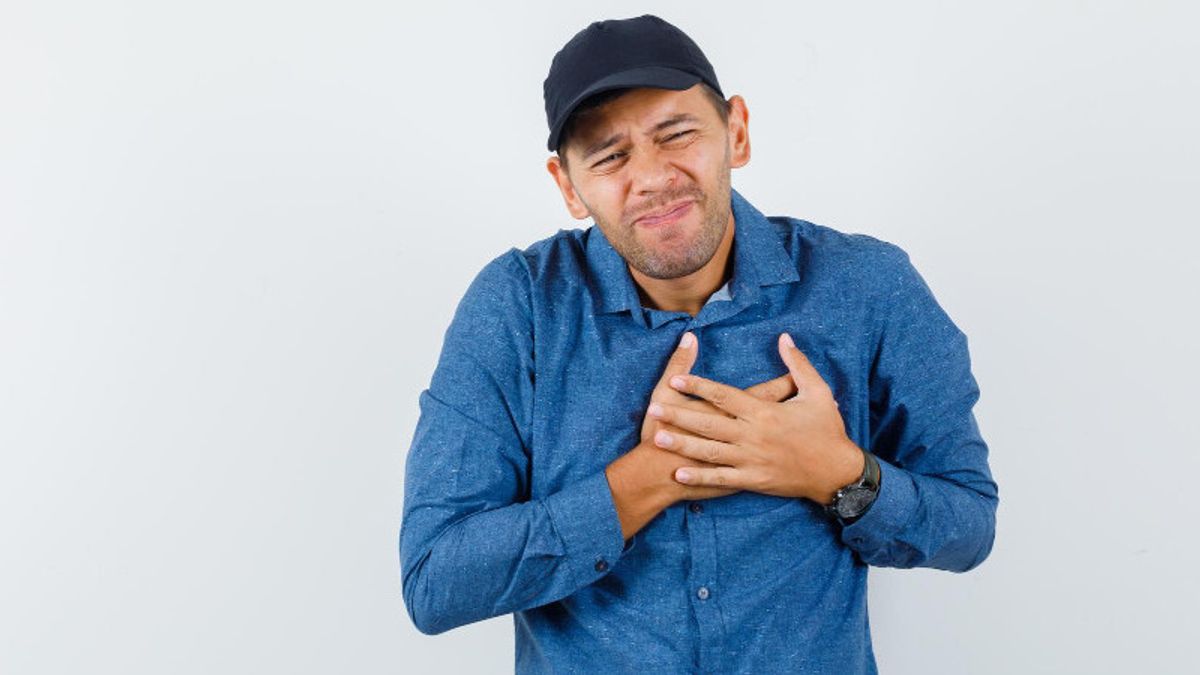YOGYAKARTA The body feels uncomfortable, it is important to recognize the symptoms. Because every symptom indicates a certain disease, just like when a person has an earthquake. What is an earthquake and how is the difference in symptoms in men and women? Here's the full explanation.
There are four types of anemia, which is generally caused by a lack of blood that enters the heart. Symptoms are similar to heart attacks, such as feeling pressure and strongness in your chest. Sometimes, the wind is called a pectoris or ischemic chest pain.
Lack of blood that enters the heart is due to arterial blockage. With this condition, oxygen brought to the heart is limited. Even less than what is needed for the heart to work normally.
The wind usually disappears quickly, reported by WebMD, Thursday, February 2. But it can be life-threatening if the symptoms are not immediately recognized and treated according to conditions. There are four types of wind, including the following:
Stable aua or stable aura is most common and triggered by severe physical activity and stress. Usually, people who experience stable aqua feel chest tight for a few minutes and disappear while resting. Although this is not a heart attack, those of you who have had symptoms have to see a doctor in order to get the best medical diagnosis and treatment.
Unlike stable wind which can last a few minutes. Unstable wind or unstable wind can last for a long time and can be felt repeatedly again. Unstable wind is actually a signal that will have a heart attack, so it is necessary to see a doctor as soon as possible after feeling it.
Types of microvascular ambients, recognized for the same symptoms as other types, are experiencing chest pain. But the difference is, the microvascular anea is not caused by blockage ofapnetic arteries. The cause is that small▁pertanyaanous arteries do not function properly so the heart does not get the blood as needed. Types of microvascular aura, are more common to women and occur for more than 10 minutes.
Prinzmetal is a variant because it rarely occurs. Usually people who experience it will feel symptoms while sleeping or resting. Symptoms, suddenly the heart arteries tightens and narrows so that the chest hurts.
Common symptoms experienced by someone with aches, feeling chest pain but each person will be followed by other symptoms that are different such as dizziness, fatigue, chest feeling full, stomach pain, vomiting, shortness of breath, overlap, and sweating. Symptoms of wind in men, will feel pain in the chest, neck, and shoulders. As for women, they may feel uncomfortable in the stomach, neck, jaw, throat, or back.
Lifestyle factors contribute to the wind. Usually because plaque accumulates on the arteries and blocks blood flow to the heart muscle. People with certain conditions, have a higher risk of getting anemia. They include advanced age, have a family history of heart disease, high blood pressure, high cholesterol, diabetes, obesity, stress, smoking, and lack of exercise.
To get a medical diagnosis, the doctor will check with an EKG test, stress tests, blood tests, chest X-rays, heart catheterization, andtegerography. As a recommendation in the prevention of the wind, healthier lifestyle changes need to be done. As much as possible, stay exercising regularly, eat healthy, get enough rest, and manage stress appropriately.
The English, Chinese, Japanese, Arabic, and French versions are automatically generated by the AI. So there may still be inaccuracies in translating, please always see Indonesian as our main language. (system supported by DigitalSiber.id)













